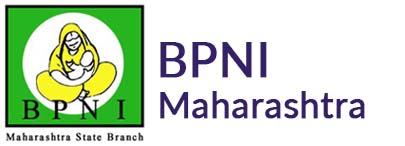About Breast Crawl Project
We made ‘Breast Crawl’ documentary in 2007 with support from UNICEF Mumbai & in collaboration with the Government of Maharashtra. A dossier containing scientific evidence for Breast Crawl was also published simultaneously. We felt that the Breast Crawl deserved worldwide dissemination for improving initiation rates, breastfeeding success & ultimately reducing neonatal, infant & under-five morbidity & mortality. We are obliged to ‘The Mother & Child Health & Education Trust’ for hosting the documentary & related resources in different languages on the specially made website ‘breastcrawl.org’ which has become very popular.
We had been aware of scientific articles describing ‘Breast Crawl’ for many years. In the year 2005 we read about ‘Breast Crawl’ in a textbook of neonatology ‘Care of the High Risk Newborn’ by Dr. Marshall Klaus & Dr. Avroy Fanaroff. It was for the first time that a ‘recommended Method’ to initiate breastfeeding appeared in a ‘text book’. The vivid description & good scientific explanation influenced us greatly. The Breast Crawl was originally described by Dr. Ann-Marie Widström, Dr. Anna-Berit Ransjo-Arvidson, Dr. Kyllike Christensson, Ms. Ann-Sofi Matthiesen, Dr. Jan Winberg & Dr. Kerstin Uvnäs-Moberg from Karolinska Institute (Sweden) in 1987.
The recommendation was discussed with Obstetricians Rachna & Kartik Bhagat, who readily agreed to try it out at their maternity service ‘Grace Maternity & Nursing Home’ at Kandivali (Mumbai). The Breast Crawl was seen exactly as described in the textbook. It was a thrilling experience not only for the parents but for the entire staff, who felt that they had witnessed a miracle. The Breast Crawl generated such excitement & motivation that the method continued to be used routinely. This was in sharp contrast to the great efforts that were required to introduce any new routines in the past. The Breast Crawl seemed to be the best & easiest method to implement the recommendation to ‘Initiate breastfeeding within half an hour of birth’ (4th Step). We were convinced that that the Breast Crawl had tremendous potential to change initiation practices.
Subsequently, BPNI (Breastfeeding Promotion Network of India) Maharashtra adopted the Breast Crawl as a recommended method for the initiation of breastfeeding. The demonstration of the Breast Crawl became a part of our 3-day IYCF Workshops. A video recording done during a workshop at Nandurbar (Maharashtra) in December 2005, was subsequently used for a one day-sensitization program of grass-root health workers, advocacy to senior government officers & pre-delivery counselling sessions for pregnant mothers. The response everywhere was overwhelming.
This motivated us to convert the video clip into a documentary in 2007 with suppprt from UNICEF Mumbai & in collaboration with the Government of Maharashtra. A dossier containing scientific evidence for Breast Crawl was also published simultaneously. We felt that the Breast Crawl deserved worldwide dissemination for improving initiation rates, breastfeeding success & ultimately reducing neonatal, infant & under-five morbidity & mortality. The Mother & Child Health & Education Trust hosted the documentary in different languages on the specially made website ‘breastcrawl.org’.
We had been aware of scientific articles describing ‘Breast Crawl’ for many years. In the year 2005 we read about ‘Breast Crawl’ in a textbook of neonatology ‘Care of the High Risk Newborn’ by Dr. Marshall Klaus & Dr. Avroy Fanaroff. It was for the first time that a ‘recommended Method’ to initiate breastfeeding appeared in a ‘text book’. The vivid description & good scientific explanation influenced us greatly. The Breast Crawl was originally described by Dr. Ann-Marie Widström, Dr. Anna-Berit Ransjo-Arvidson, Dr. Kyllike Christensson, Ms. Ann-Sofi Matthiesen, Dr. Jan Winberg & Dr. Kerstin Uvnäs-Moberg from Karolinska Institute (Sweden) in 1987.
The recommendation was discussed with Obstetricians Rachna & Kartik Bhagat, who readily agreed to try it out at their maternity service ‘Grace Maternity & Nursing Home’ at Kandivali (Mumbai). The Breast Crawl was seen exactly as described in the textbook. It was a thrilling experience not only for the parents but for the entire staff, who felt that they had witnessed a miracle. The Breast Crawl generated such excitement & motivation that the method continued to be used routinely. This was in sharp contrast to the great efforts that were required to introduce any new routines in the past. The Breast Crawl seemed to be the best & easiest method to implement the recommendation to ‘Initiate breastfeeding within half an hour of birth’ (4th Step). We were convinced that that the Breast Crawl had tremendous potential to change initiation practices.
Subsequently, BPNI (Breastfeeding Promotion Network of India) Maharashtra adopted the Breast Crawl as a recommended method for the initiation of breastfeeding. The demonstration of the Breast Crawl became a part of our 3-day IYCF Workshops. A video recording done during a workshop at Nandurbar (Maharashtra) in December 2005, was subsequently used for a one day-sensitization program of grass-root health workers, advocacy to senior government officers & pre-delivery counselling sessions for pregnant mothers. The response everywhere was overwhelming.
This motivated us to convert the video clip into a documentary in 2007 with suppprt from UNICEF Mumbai & in collaboration with the Government of Maharashtra. A dossier containing scientific evidence for Breast Crawl was also published simultaneously. We felt that the Breast Crawl deserved worldwide dissemination for improving initiation rates, breastfeeding success & ultimately reducing neonatal, infant & under-five morbidity & mortality. The Mother & Child Health & Education Trust hosted the documentary in different languages on the specially made website ‘breastcrawl.org’.
